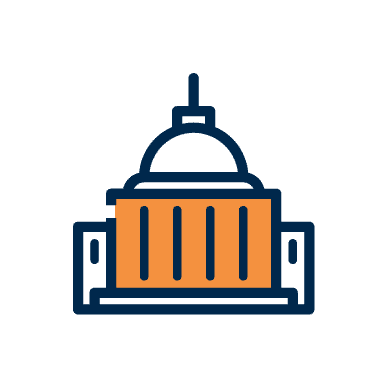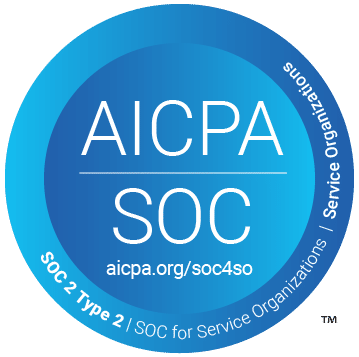- Introduction
Under Sections 1128 and 1156 of the Social Security Act (the “Act”), the Office of Inspector General (“OIG”) of the U.S. Department of Health and Human Services (“HHS”) has authority to exclude from participation in Federal health care programs and to impose civil money penalties (“CMPs”) for specific misconduct related to Federal health care programs. In the event of an exclusion, no Federal health care program payments may be made for any items or services furnished, ordered, or prescribed by an excluded individual or entity. Employing or contracting with an excluded party can result in significant penalties for providers participating in Federal health care benefit programs. This article briefly overviews the scope, impact, processes, and legal implications of exclusions. - Understanding Exclusions from Federal Health Care Programs
Exclusion is a remedial measure designed to protect the Federal health care programs from any party whose continued participation constitutes a risk to the programs and their beneficiaries. The effect of an exclusion from Federal health care programs is that no Federal health care program payment may be made for any items or services furnished by an excluded individual or entity or directed or prescribed by an excluded provider. This payment ban applies to all Federal health care program reimbursement methods, whether payment results from itemized claims, cost reports, fee schedules, or a prospective payment system (“PPS”). The prohibition applies even when the Federal payment is made to another provider, practitioner, or supplier that is not excluded.
The prohibition against Federal health care program payment for items or services furnished by excluded parties also extends to payment for administrative and management services indirectly related to patient care.Such services may include but are not limited to health information technology services and support, strategic planning, billing and accounting, staff training, and human resources. This prohibition applies even if the services are not separately billable. In addition, no payment may be made to cover an excluded individual’s salary, expenses, or benefits, regardless of whether they provide direct patient care.
Exclusions are imposed for a variety of reasons and typically fall into two groups: mandatory and permissive exclusions.
- Mandatory Exclusions
OIG is required by law to exclude entities that have committed certain types of criminal offenses from participation in Federal health care programs. These offenses include:- fraud, as well as any other offenses related to the delivery of items or services under Medicare/Medicaid or other state programs;
- patient abuse or neglect;
- felony convictions or other healthcare-related fraud;
- theft or other financial misconduct;
- felony convictions related to unlawful manufacture, distribution, prescription, or dispensing of controlled substances.
- Permissive Exclusions
OIG has the discretion to exclude individuals for:
- misdemeanor convictions related to health care fraud other than Medicare or a state health program;
- fraud in a program (other than a health care program) funded by any Federal, state or local government agency;
- misdemeanor convictions relating to the unlawful manufacture, distribution, or prescription of controlled substances;
- suspension, revocation, or the surrendering of a license to provide healthcare for reasons bearing on professional competence, professional performance, or a financial integrity provision of unnecessary or substandard services;
- defaulting on health education loans or scholarship obligations.
- Mandatory Exclusions
- Administrative Process for Imposing Exclusions
- General Administrative Process
When OIG considers excluding an individual or entity, the administrative process is
governed by regulations codified at 42 C.F.R. Sections 1001.2001 through
1001.2007. The process varies according to the basis for the proposed exclusion
but generally begins with OIG sending a written notice to any party it
considers excluding. The notice includes the basis for the proposed exclusion
and a statement about the potential impact of an exclusion. The notice is
pre-decisional and allows the party thirty or sixty days to respond in writing
with any information or evidence relevant to whether the exclusion is warranted
and to raise any related issues, such as mitigating circumstances. For certain
types of exclusion, the party is afforded the opportunity to present an oral
argument to an OIG official or HHS Administrative Law Judge (“ALJ”) before a
decision about whether to exclude is reached. OIG considers all available
information when deciding whether to impose the exclusion.
If OIG decides to proceed with exclusion, it sends the party a Notice of Exclusion
along with information about the effect of the exclusion and appeal rights. OIG
does not send a pre-decisional notice for mandatory exclusions for the minimum
five-year period and for specific permissive exclusions. A Notice of Exclusion
is the first notification sent for those types of exclusions. Depending on the
basis, exclusions are effective immediately, twenty days after the Notice of
Exclusion is mailed. - Appeal of Exclusion
All exclusions implemented by OIG may be appealed to an HHS ALJ and any adverse decision may be appealed to the HHS Departmental Appeals Board (“DAB”). After the DAB’s final decision, judicial review in Federal court is also available. - Waiver of Exclusion
OIG also has the authority to waive a party’s exclusion from participation in Federal health care programs. A party excluded under Sections 1128(a)(1), (a)(3) or (a)(4) of the Act may be eligible for a waiver only when (1) the excluded party is the sole community physician or the sole source of essential specialized services in a community, and (2) the exclusion would impose a hardship on beneficiaries (as defined in Section 1128A(i)(5) of the Act) of that program. A party excluded under Section 1128(a)(2) of the Act following a conviction related to patient abuse or neglect is not eligible for a waiver. For a party excluded under OIG’s permissive exclusion authorities, a waiver may only be granted if OIG determines that the exclusion would not be in the public interest.
A waiver may only be requested by a Federal health care program administrator. Excluded individuals or entities may not request a waiver from OIG. When OIG grants a waiver to an excluded party, it permits payment by Federal health care programs for items and services that the excluded party furnishes, orders, or prescribes within the scope of the waiver (e.g., within a specified geographic area or institution, limited to a specific health care specialty, etc.). - Reinstatement Following Exclusion
Reinstatement of an excluded party is not automatic once the specified exclusion period ends. To participate in Federal health care programs once the term of exclusion ends, the party must apply for reinstatement and receive written notice from OIG that reinstatement has been granted.
A party with a defined period of exclusion (e.g., five years, ten years, etc.) may begin the process of reinstatement ninety days before the end of the period specified in the exclusion notice letter. Requests received earlier than ninety days before the end of the period of exclusion will not be considered.
A party excluded based on licensure actions, whose period of exclusion is indefinite, may apply for reinstatement when they have regained the license referenced in the exclusion notice. However, under certain conditions, the party may apply for early reinstatement without regaining the license referenced in the exclusion notice.
- General Administrative Process
- Employing or Contracting with an Excluded Party
Employing or contracting with an excluded individual or entity can result in significant penalties for providers participating in Federal health care programs. If a health care provider employs or contracts with a party that the provider knows or should know is excluded by OIG, the provider may be subject to CMP liability if they submit claims to a Federal health care program for health care items or services provided, directly or indirectly, by excluded parties. OIG may impose CMPs of up to $20,000 for each item or service furnished by the excluded party for which Federal health care program payment is sought, an assessment of up to three times the amount claimed, and program exclusion.
CMP liability applies to the furnishing of all categories of items or services that are violations of an OIG exclusion, including direct patient care, indirect patient care, administrative and management services, and items or services furnished at the medical direction or on the prescription of an excluded individual when the individual furnishing the services either knows or should know of the exclusion. Exclusion violations can also give rise to additional sanctions under the False Claims Act. Violators may face criminal penalties, including fines, imprisonment, and exclusion from participating in Federal health care benefit programs. - How to Determine If a Party Is Excluded
To avoid liability, health care entities should routinely check the List of Excluded Individuals and Entities (“LEIE”), maintained on OIG’s website (http://oig.hhs.gov/exclusions), to ensure that new hires and current employees are not on the excluded list. The LEIE contains the following information:
- the name of the excluded individual at the time of the exclusion;
- the excluded individual’s National Provider Identifier (“NPI”), if applicable;
- the individual’s provider type;
- the authority under which the individual was excluded;
- the State where the excluded individual resided at the time of exclusion or the State where the entity was doing business;
- exclusion waiver information, if applicable; and
- a mechanism to verify search results via Social Security Number (“SSN”) or Employer Identification Number (“EIN”).
To avoid potential CMP liability, providers should check the LEIE before employing or contracting with individuals and periodically check the LEIE to determine the exclusion status of current employees and contractors. There is no statutory or regulatory requirement to check the LEIE, and providers may decide how frequently to check the LEIE. OIG updates the LEIE monthly, so screening employees and contractors each month best minimizes potential overpayment and CMP liability. When checking the LEIE, providers should maintain documentation of the initial name search performed and any additional searches conducted to verify the results of potential name matches.
To determine which individuals should be screened against the LEIE, OIG recommends that providers review each job category or contractual relationship to determine whether the item or service being provided is directly or indirectly, in whole or in part, payable by a Federal health care program. If yes, providers should screen all individuals who perform under that contract or who are in that job category to best limit CMP liability.
Providers may contract with another entity to perform their screening against the LEIE. However, it remains their responsibility to determine whether employees are excluded, and they will retain the potential CMP liability if they employ or contract with an excluded individual.
Providers should determine whether to screen contractors, subcontractors, and the employees of contractors using the same analysis they would for their employees. The risk of potential CMP liability is most significant for those who provide items or services necessary for patient care, as such items and services are more likely to be payable by Federal health care programs. For example, OIG recommends that providers screen nurses provided by staffing agencies, physician groups that contract with hospitals to provide emergency room coverage, and billing or coding contractors. Alternatively, OIG notes that providers may also choose to rely on screening conducted by the contractor (e.g., staffing agency, physician group, or third-party billing or coding company). Still, OIG recommends that the provider validate that the contractor is conducting such screening on behalf of the provider (e.g., by requesting and maintaining screening documentation from the contractor).
Regardless of whether and by whom screening is performed and the status of the individual or entity (e.g., employee, subcontractor, employee or contractor, or volunteer), the provider is subject to overpayment liability for any items or services furnished by any excluded party for which the provider received Federal health care program funds and may be subject to CMP liability if the provider does not ensure that an appropriate exclusion screening was performed.
Main Takeaways
- A Medicare exclusion prohibits Federal health care program payments for services furnished, ordered, or prescribed by excluded individuals or entities.
- Exclusions extend to administrative and management services indirectly related to patient care.
- Medicare exclusions can be:
- Mandatory due to offenses like fraud or felony convictions.
- Permissive for issues such as licensing problems or misdemeanors.
- The administrative process includes notifications, opportunities for rebuttal, and potential appeals.
- Providers should routinely check the List of Excluded Individuals and Entities (LEIE) to avoid penalties.
- Failure to comply with Medicare exclusion regulations can result in significant civil monetary penalties and other sanctions.
If you have any questions regarding OIG’s exclusion authorities or would like assistance in a matter involving the exclusion of an individual or entity from participation in Federal health care programs, please reach out to Thomas H. Barnard, Mary Grace Griffin, or the Baker Donelson Health Law team member with whom you typically work.










































